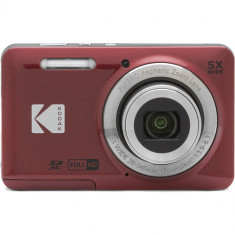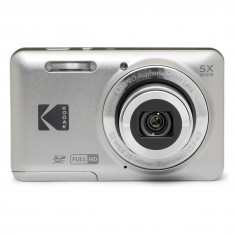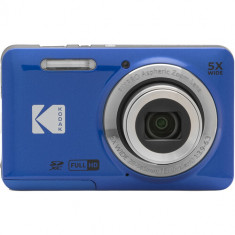Point & Shoot
- 14 itemsFilters
Categories
Brand
-
2
-
5
-
2
-
5
Availability
-
8
-
13
-
14
Monitor Size
-
1
-
3
Recording Modes
-
5
-
3
Canon PowerShot SX70 HS Digital Camera
SKU #102040 Model 3071C001Key Features
- 20.3MP CMOS Sensor
- DIGIC 8 Image Processor
- 21-1365mm (35mm Equivalent)
- 65x Zoom Lens
Kodak PIXPRO FZ55 Digital Camera (Red)
SKU #110542 Model FZ55RDKey Features
- 28mm Wide-Angle Lens
- 16MP 1/2.3" CMOS Sensor
- 5x Optical Zoom Lens
- 2.7" LCD Screen
Kodak PIXPRO FZ55 Digital Camera (Silver)
SKU #110543 Model FZ55SLKey Features
- 28mm Wide-Angle Lens
- 16MP 1/2.3" CMOS Sensor
- 5x Optical Zoom Lens
- 2.7" LCD Screen
Kodak PIXPRO FZ55 Digital Camera (Blue)
SKU #110544 Model FZ55BLKey Features
- 28mm Wide-Angle Lens
- 16MP 1/2.3" CMOS Sensor
- 5x Optical Zoom Lens
- 2.7" LCD Screen
Point & Shoot
Point-and-shoot cameras are distinguished from single-lens reflex cameras (SLRs) in several respects: point-and-shoot film cameras, and many digital ones, use a viewfinder. The image that the photographer sees is not the same image that passes through the primary lens of the camera. Rather, the image in the viewfinder passes through a separate lens.[4] SLRs, on the other hand, have only one lens, and a mirror diverts the image from the lens into the viewfinder; that mirror then retracts when the picture is taken so that the image can be recorded on the film or sensor. With this mechanism, pictures cannot be previewed on the LCD screens of most digital SLRs (DSLR). Some manufacturers have found a way around this limitation, often by splitting the image into two just before reaching the viewfinder eyepiece. One image goes into the viewfinder and the other goes into a low resolution image sensor to allow light metering or previewing on the LCD, or both.
Digital cameras share one advantage of the SLR design, as the camera's display image comes through the lens, not a separate viewfinder. Mirrorless Interchangeable Lens Cameras (MILC Cameras) lack a mirror but in many ways can be used the same as DSLRs. Many smaller digital point-and-shoots of the 2010s omit the viewfinder and use only the screen.
With SLR cameras, it is important that the image in the viewfinder be the same image recorded by the film or sensor, so that the effect of the add-on lenses and filters can be seen by the photographer. Point-and-shoot cameras generally don't have such add-on devices, hence no need.
Small cameras, including digital ones, encourage the occurrence of photographic orbs — unexpected, typically circular artifacts that occur in flash photography — where the short distance between the lens and the built-in flash decreases the angle of light reflection to the lens. The resulting retroreflection makes dust particles bright and visible.





